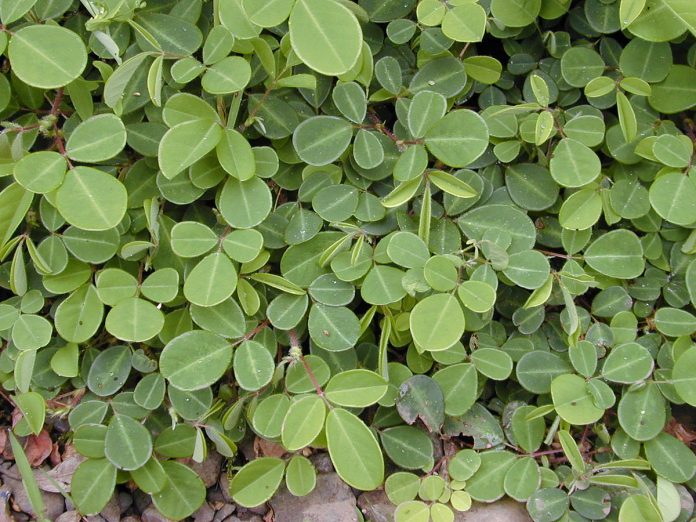Cultivation practices of Desmodium
Desmodium spp is a large perennial tropical forage legume. It is a large genus of plants in the pea family (Fabaceae). It has a long trailing and climbing stem that roots at the nodes. The stems are grooved, hairy, reddish brown in colour and branched freely. There are numerous varieties but two most common are the green leaf desmodium and silver leaf desmodium. Green leaf desmodium has leaves with reddish brown to purplish spot on the upper surface while silver leaf desmodium has white leaves covered in dense hairs.
Desmodium is a high yielding fodder crop with good palatibility and is highly nutritious especially when young with dark green leaves and less than one meter tall. It has high quality protein; used for conservation as hay and silage and for cut and carry system. It forms effective ground cover in vulnerable areas, the abundant leaf fall and slow decomposition resulting in deep mulch layer under the plants.
Desmodium can be grown as a pure stand or as a mixture with Napier grass. It can also be grown under a maize crop or even as cover under banana or coffee. It can be intercropped in maize so as to protect maize (40-50%) against army worm and borer.
Cultivation of Desmodium
- Temperature
It is a warm season plant that has found a place in cultivation in the milder climate of moderate altitude in the tropics and low altitude in the sub tropics. It has not seen successful in humid lowland tropics. An altitude of 800 m to 2500 m receiving annual rainfall of 875 mm is favourable.
- Soil
It thrives well in all types of soil except saline. It becomes chlorotic in alkaline soil probably due to iron deficiency.
- Land preparation
Desmodium is best sown in weed-free, well prepared nursery seedbed with a fine textured soil. A seedbed 3 m by 3 m, 15 cm raised will required about 100 gm of seeds. It needs to grow in close association with Rhizobia which live in the root of desmodium and fixes nitrogen from air. If available, pack of rhizobia inocuant should be mix with desmodium seeds and carefully follow the instruction on a pack. If not available, mix the seeds with handful of soil from another good desmodium plot.
- Sowing
The best time to plant is at the start of rains (Mid May- Mid July). Sowing can be from drilling or broadcasting. For broadcasting, spread the seeds evenly over the seed bed. Sow the seed immediately after adding the innoculant. The nursery bed should be watered carefully and often.
Desmodium can be grown between rows of Napier grass. Planting of Napier grass at 1×2-meter spacing. Planting of desmodium cuttings at 30 cm apart forms a complete ground cover and adds nitrogen at the same time.
- Fertilizer
Application of N: P: K- 15:60:0 kg per hectare is beneficial.
- Intercultural operation
Weeding of the plot especially during early stage of establishment is necessary. A fungal disease, anthracnose, can affect desmodium especially in poorly drained soil.
- Harvesting
Availability of green forage: mid April- November Desmodium starts harvesting after at least four months. The best harvesting schedule is to cut at 12 week interval, cutting 10 cm or higher above the soil level.
